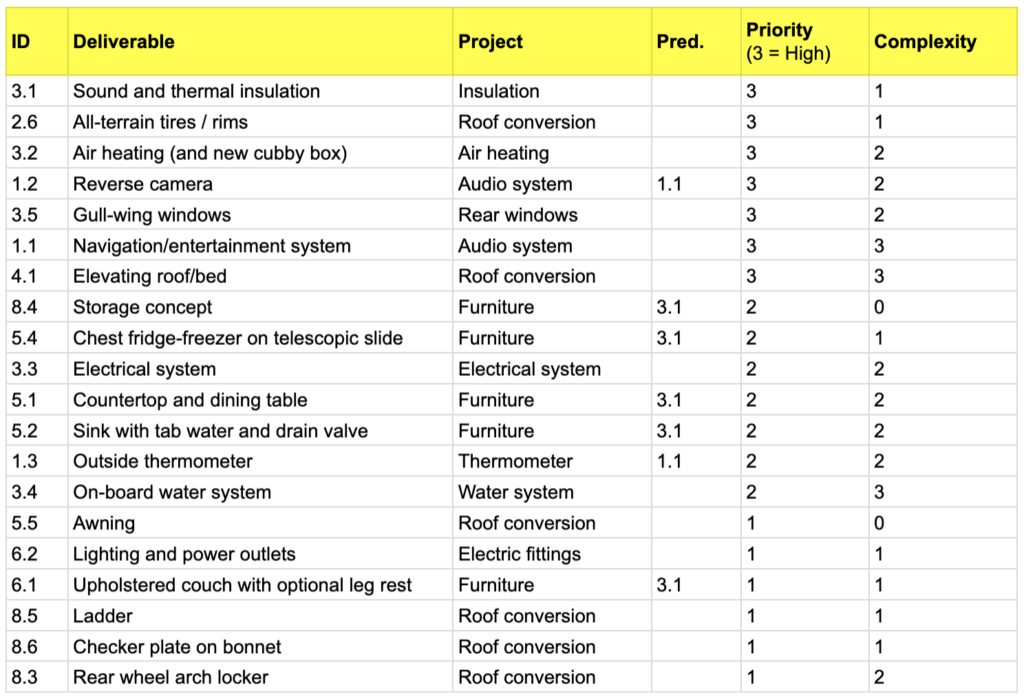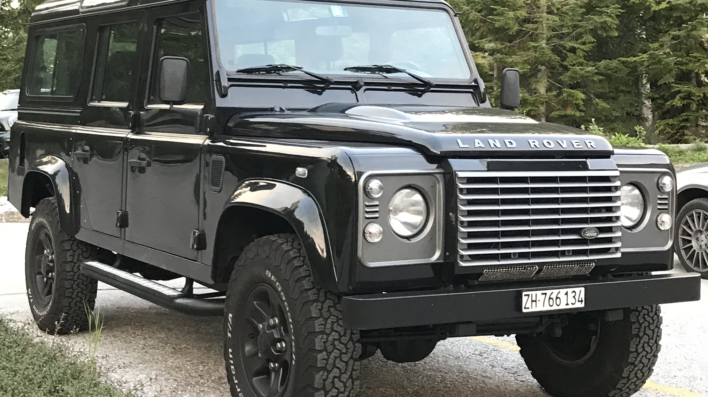Every life goal evolves around a vague and abstract dream, which begins to materialise when the passion is strong enough and particularly when the achievement of this goal is put into a workable plan.
One of my life goals is to explore different parts of the world in an off-road camper van for some time – North and South America, parts of Sub-Saharan Africa or even Oceania. I could also see myself driving all the way to Japan, my former home, by way of Central Asia. In the beginning, however, I would focus on destinations in Europe, such as the Nordic or Mediterranean countries.
When this dream hit me, it did not take me long to purchase a suitable vehicle – a Land Rover Defender (see here for details) – and to research as much as I could about camper van conversions. Now that I’m ready to begin with the hard work, it’s time to make a first plan for myself. Let’s start!
Objective
I will convert the Land Rover Defender »Samson« into a compact and yet luxurious, go-anywhere camper that accommodates at least two people. On one hand, it should feature many of the amenities of a larger camping van that are necessary or “expected” for long-term and self-sufficient travel (i.e. food, water and electricity for 4-5 days or longer). On the other, the van needs to retain its off-road capabilities and handle rough terrain. The usual vehicle recovery equipment put aside, the interior needs to be both durable and lightweight. Needless to say, maximum storage will be important, too.
Scope
The scope of work that needs to be done can be divided into three categories as follows.
1. Mobility
On-road / general
- Navigation/entertainment system that connects to my smartphone (incl. speakers that produce a reasonably decent sound).
- Reverse camera for backing into narrow parking spaces, as the Defender has almost zero rear visibility due to the spare tire attached to the back.
- Outside thermometer as a safety add-on to spot potentially icy roads in the winter.
- Reserve fuel tank to extend the range in remote places (jerrycans might be an alternative, yet they are also a waste of space).
Off-road
- LED light bar (and side working lamps) for illuminating dark roads and trails.
- Electric winch (incl. new front bumper) for enhanced off-road capability.
- Snorkel with cyclone air filter for dusty terrain.
- Sump and diff guards to protect the underbody.
- Vehicle recovery tracks (incl. mount).
- All-terrain tires and durable rims.
- Air compressor for convenient tire pressure regulation.
- Radio transceiver with antenna for short-range communication.
2. Camping
General considerations
- Sound and thermal insulation.
- Air heating for cold nights.
- Electrical system powered by service battery and solar.
- On-board water system (potentially for cooking, drinking and showering etc.).
- Tinted and watertight rear gull-wing windows for more privacy.
Sleeping area
- Elevating roof incl. bed frame and mattress.
- Fittings for bedside lamp, fan etc.
Cooking and dining area (the galley)
- Countertop and extractable dining table.
- Small sink with tab water and drain valve.
- Liquid fuel cooking stove for indoor and outdoor use.
- Portable chest fridge-freezer on telescopic slide for outside access.
- Awning to protect against sun and rain (when cooking/dining outside).
Relaxation space
- Upholstered couch with optional leg rest (ideally long enough to serve as a bed for one person or a dog).
- Lighting and fan.
Bathroom (the head)
- Shower with warm – not boiling hot! – water and an optional shower tray.
- Compact toilet (no dry or chemical toilet though).
3. Storage
Storage in such a compact vehicle is so scarce and invaluable that it deserves special attention. The following items need to be considered.
- Lightweight roof rack (incl. ladder and checker plate on bonnet).
- Mount racks and lashing points for two bicycles and maybe a sit-on-top kayak.
- Side locker fitting behind rear wheel arch.
- Plenty of storage (ideally in standard-sized boxes that can be easily removed) for clothing, shoes, food, kitchen and cleaning utensils, foldable outdoor furniture (e.g. chairs and table), additional blankets, tools, vehicle wear and tear parts, electronic devices and charging cables, hiking gear, yoga mattresses, potentially wet stuff etc.
Timeline
There are no time constraints or hard deadlines for this project. However, certain items are more important or valuable than others (e.g. all the off-road equipment is not so important yet), and some steps have dependencies on predecessors (e.g. the insulation needs to be done before the interior planning can begin). To highlight this, I will develop a phase plan and group similar items into discrete (sub-)projects. Low priority tasks as well as all simple shopping cart items, such as the roof rack or cooking stove, have been removed from this list for now. We will re-visit this later.

Next steps
Looking at the groupings and dependencies, I see four distinct work streams that can be tackled in parallel. Separate articles for each one of them will follow.
- Cockpit upgrades
- Audio system installation (incl. reverse camera)
- Outside thermometer installation
- Air heating installation
- New cubby box
- Interior work
- Pop top roof conversion (incl. a few extras)
- Replacement of rear windows
- Sound and thermal insulation
- Furniture design (incl. storage concept)
- On-board water system
- Electrical system setup (incl. electric fittings)

Hallo Bastian,
viel Erfolg und Spaß bei deinem Vorhaben!
Ähnliche Gedanken hatte ich mir bei unserem Landy anfangs auch gemacht. Es kam vieles aber ganz anders 🙂
Falls Du Zeit hast, solltest Du nicht erst alles komplett fertig bauen und dann reisen, sondern in verschiedenen Ausbaustufen Reisen unternehmen. Die Hälfte von dem was Du jetzt zu brauchen meinst fliegt dann evtl aus dem Plan raus 😉 Rückfahrkamera und Spüle zB
Der Platz im Landy ist doch sehr knapp.
Frank